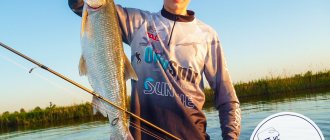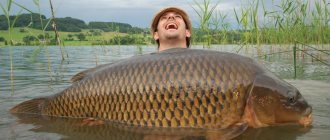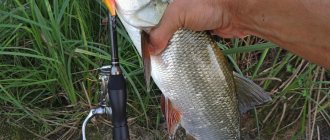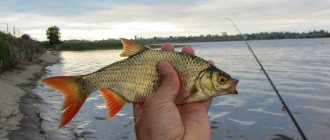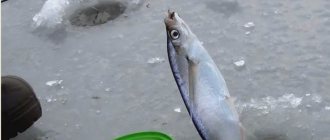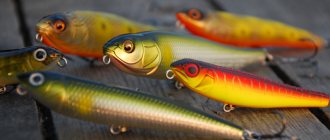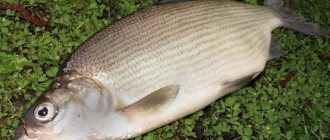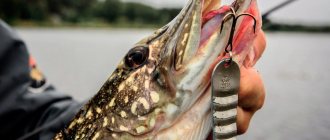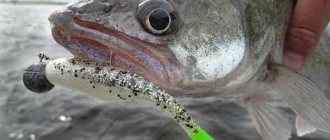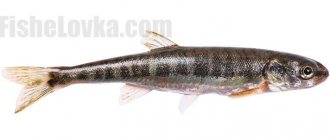Appearance Features
The loach belongs to the carp family and is a freshwater fish. It grows in length from 15 to 18 cm, but there are specimens up to 30 cm or more in size. It has an elongated body, covered with very small scales, but which can be seen with the naked eye. The caudal fin has a rounded shape, and 10-12 antennae can be seen around the mouth. There is an infraorbital, non-functional spine located in the thickness of the skin. Males can be distinguished by an elongated and somewhat thickened second ray of the pectoral fin. On the left and right of the dorsal fin, there is a barely noticeable thickening formed by adipose tissue. If you have never seen this fish before, it can easily be confused with an eel or a snake.
Therefore, the loach received such a name, because of its appearance and ability to wriggle. It is possible that these factors had a direct impact on its popularity among fishermen. It is little used in food, and fishermen go out for any fish, but not for loaches.
All fins, like the rear one, have rounded, very neat shapes. The loach has both pectoral and pelvic fins, which are located at some distance from the pectoral fins. The scales of the loach are almost invisible because they are covered with a layer of mucus. On the back of an adult loach you can see black dots located on a yellow-brown surface. The belly of a loach can have different shades, depending on living conditions: it can have either a reddish or yellow color. Small, black spots can also be seen on the brown fins. The loach has small, yellow eyes.
Symmetrically, along the sides there are 3 black stripes, the middle of which is slightly longer than the other 2. Depending on the living conditions, the full color of the loach may change: if you take a loach from a river with clean running water, then the loach will have lighter colors, and if you catch this fish in a pond with a muddy bottom and not so clear water, then the loach will have shade much darker.
As mentioned above, individual specimens can reach a length of about 30 cm, and the thickness of such a fish can be equal to the thickness of an adult’s thumb.
What kind of fish
The fish is a representative of cyprinids. People almost always associate the species with crucian carp or bream. However, it includes a large number of loaches. The length of the fish reaches 40 centimeters and weighs no more than 125 grams. On average, the length is 10-12 centimeters, weight - 100 grams.

The color of the loach is brown and only the belly is light. The intensity of the color depends on the environment in which it lives: the type of soil, how clear the water is. There are many dark spots on the back.
The family includes 170 species. In Russia there are common and Amur loaches, as well as the common spined loach.
Anglers often call the loach a mini-eel. But the real eel prefers its miniature relatives in food.
Habitat
Most of the loach can be observed in the reservoirs of Central and East Asia. As for the European part, it is not so rich in this interesting fish. Some numbers of loaches were noticed in eastern France, as well as in the reservoirs of Yekaterinburg and the eastern Urals.
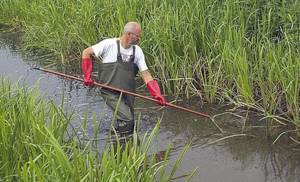
The fact that it moved to these areas indicates that the ecosystem began to be disrupted, as a result of which part of the swamps, where it is the largest representative of the ichthyofauna, dried out. Quite a lot of this fish is found in the muddy reservoirs of the Western Urals, which give rise to the largest rivers of the Asian part of Russia. Most likely, this is due to its spread closer to Asian regions.
In the Leningrad region you can hardly find loach, and only the Kronstadt Bay and Peypus can boast of the presence of this fish.
The loach prefers swampy areas and all kinds of ditches with a large amount of silt. There is quite a lot of it in the swamps of Polesie, where its fishing is widespread. It can be found in large quantities in the Kuban, but in the Crimea and the Caucasus it can hardly be found.
What you need to know about loach fishing
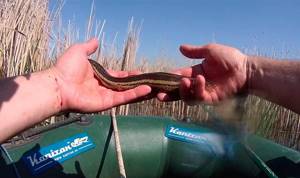
The habitat of the loach is inland waters of Europe, East and South Asia. The loach does not tolerate clean, fast-flowing rivers at all. It prefers any overgrown and swampy bodies of water - swampy rivers with chalk flows, overgrown blind channels, backwaters, creeks, stagnant lakes, ponds, ditches and even outright swamps. The bottom prefers muddy and heavily silted. It tolerates drying out of the pond without any problems, burrowing into the damp mud. It is extremely unpretentious and tenacious, probably only rotan is more tenacious and unpretentious than it.
The loach's diet includes worms, mollusks, larvae, mud, and if there is absolutely nothing to eat, silt.
Nutritional Features
The loach can eat quite a variety of foods: larvae, mollusks, bloodworms, worms. It may well feed on the eggs of other fish species, which can reduce their numbers. Enjoys eating mosquito larvae.
As observations show, this representative of the underwater world is quite voracious and can cause damage to the quantitative composition of other inhabitants, such as crucian carp or carp. But this can happen if there is a lack of other food in the reservoir. If the reservoir is muddy, then the loach will find food for itself, not paying attention to the eggs of other fish species.

Trap basket
Winter fishing is somewhat different from fishing in warm seasons. You will need to make your own trap for this. A basket, sieve, box or any similar container will do. A tarpaulin is placed on the bottom, and a hole is made in the center of the trap, which should be slightly higher. The principle of a crayfish trap is used, where there is an opportunity for fish to enter, but not for exit. To make such a hole, you can use several methods. Try installing a tube with a larger diameter than the thickness of the loach's body. It is desirable that it be several centimeters higher than the bottom, but at the same time lower than the sides of the trap.
Using a trap: A hole with a smaller cross-section than the diameter of the trap is cut in a reservoir. Twigs are laid on top of it, and then the whole thing is covered with hay. After everything is done, you need to wait a few days. The fish, sensing the influx of oxygen, rises up and accumulates in large schools around the hole. After several days, when a school of loaches is already near the hole, it is necessary to expand it and lower the trap there.
The sides of the trap must be higher than the water level, so the fish will not be able to get out of it. Having completed all the steps, the hole is again covered with twigs and hay. It turns out that the fish will come to the surface for oxygen and crawl into a trap from which there is no way to escape. Thanks to this method, you can catch dozens of loaches with a basket.
Breeding period
Not many people know when the loach starts and when it stops spawning. Because of this, quite a few disputes arise. If you believe the observations of experienced fishermen, the loach spawns in the spring, at the beginning of March. The only problem is that the spawning period can be extended in time. Some individuals begin to spawn in winter. Females are quite fertile and can lay from 15 to 150 thousand eggs. Nature has ensured that this unique species of fish has fed humans for thousands of years.
Feeding
It feeds on invertebrates, insect larvae, small crustaceans and bottom mollusks. And there is one more very valuable advantage of the loach. It devours a huge number of mosquito larvae, including malaria, and is not inferior in this to the Gambusia, which was brought from America and acclimatized in our country precisely for these purposes.
The loach is voracious and greedily grabs bloodworms, raw meat, earthworms, ant eggs, and picks up food only from the bottom. He finds food by touch (on his head around his mouth he has 10 antennae, which serve as the main organs of touch).
How to catch a loach
Loach can be caught both in summer and winter. In summer, it can be caught with a regular float rod. The best option is a fishing rod with a sensitive float, equipped with hooks No. 3-No. 4. It is advisable to use a green fishing line so that it does not stand out at the bottom, among the silt and underwater thickets. The thickness of the fishing line can be within 0.25mm, although you can immediately say that it is thick enough for catching loaches, so you can use a thinner fishing line. There is no need to catch particularly large specimens. You can use grasshoppers, bloodworms, bark beetle larvae or caddis flies as bait.

According to the recommendations of experts, the bait should be cast to the border of clean water and algae, and then slowly carried out. If you have a boat, it can make the task easier. With the help of a boat you can move freely with the current. If there was a bite during the retrieve, but the fish was not caught, then you can return to the starting point and repeat your actions. There shouldn’t be any special problems with catching loaches if you have at least some skills in handling a fishing rod. At the same time, you need to have skills in handling the boat, and even more so in the current.
Loaches bite vigorously no matter when fishing occurs, day or night, although they are most active between sunset and darkness. The loach bites in a specific way: the float can sink slightly and, as it were, move to the side. The hook should be made after several such twitches. The loach's appetite is quite large, so it swallows the bait instantly and completely, so that there are practically no escapes.
Instead of a hook, you can tie a needle to the main fishing line, this is how they practice catching eels. The needle is tied not behind the eye, but in the middle. The worm is placed on a needle and thrown into the tackle. During the bite, when the loach swallows the worm with the needle, a hook is made and the needle becomes across, so that the fish has no chance to escape.
Winter fishing
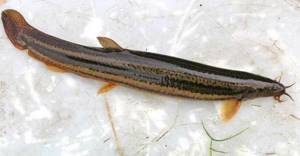
The year-round activity of the silt dweller leaves a good chance of catching it not only in summer. Significant migration of this fish is not observed in winter. This means that holes drilled over silted areas of the bottom are almost a guarantee of catching a distant relative of the eel.
Catching loach in winter from an ice hole is similar to summer fishing, both in tactics and equipment. Fishing in the current will most likely prompt you to abandon the float, which will force you to increase your concentration on the hole.
In addition to traditional fishing methods, in some regions there are folk methods passed on by fishermen from generation to generation.
One of them is stake fishing. Its essence is as follows:
- Choose 8-10 young poles one and a half meters long. One edge is sharpened so that it can be driven (stuck) into the muddy bottom.
- At a height of approximately 60-70 cm from the bottom, cuts are made into strips of bark with a knife and separated from the wood. It should look like a Christmas tree with “paws”.
- Muddy shallow water with a depth of no more than a meter is selected. Holes with a diameter of 100-120 mm are drilled. The poles are stuck into the ground and left there for several hours (optimally from evening to morning).
- After 5-6 hours you will get a tackle on which from three to five fish will hang.
Recommended reading: Perch in the wilderness
From ice to trap
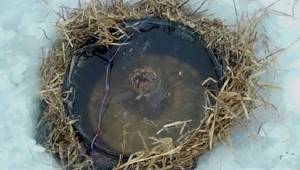
For exotic lovers, this type of fishing is what they need. The technology and equipment are simple. You will need a container measuring 50 cm by 40 cm or more. A basket, wooden box, metal basin, bucket or something similar is quite suitable for this. The main condition is the absence of a bottom. Either a cloth (or plastic) bag is placed inside. The edges are turned outward, and a pipe with a diameter of 3-4 cm is attached through the hole in the lower part. This will be the entrance hole for the fish. The pipe must be secured so that its upper edge protrudes 8-10 cm above the bottom of the bag.
The device is installed in the hole in such a way that the upper edge of the pipe is recessed by 5-10 cm. Several branches are laid above the trap and covered with straw, reeds, fallen leaves and snow. The wait for the first “harvest” can last from several hours to one or two days.
On a note! A simple attachment in the form of one or two sticks and a cord tied to the upper edge of the device will help keep the tricky tackle near the ice.
Logically, the fish should rush to a source of fresh air, enter the trap through the pipe and remain in it due to the impossibility of leaving it through a piece of tube protruding above the bottom.
The method is simple, there are no problems with installation. It works flawlessly to this day.
Oxygen bait

In addition to natural bait for ice fishing, the popularity of synthesized compounds that imitate an oxygen source is growing.
Release forms: pressed capsules (tablets) or dry mixture. In the second case, the fisherman himself regulates the size and density of the lumps. By the way, when fishing for bindweed in winter, this bait shows good results.
